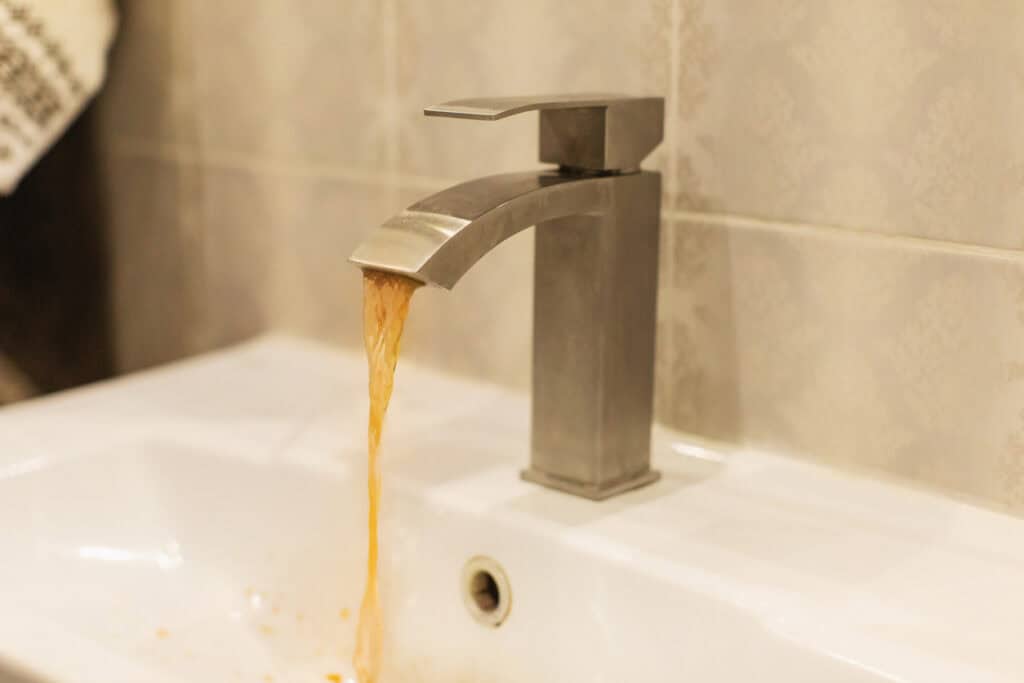Because many water wells are located outside urban areas, it would be easy to think that the groundwater feeding those rural wells would be in good condition. After all, cities and big industries are located far away. Actually, that might not be a safe assumption.
Currently, there are thousands of landfills in America that are filled with trillions of pounds of solid waste. In California, Colorado, Nevada and Pennsylvania, for example, there are more than 35 tons of trash per person stashed in each state’s landfills. Illinois, Indiana and Ohio are close behind. New York has a remarkably lower tonnage of trash per resident but that might be because they ship more than a million tons of refuse to Ohio each year.
All the chemicals, toxins and pathogens disposed of in landfills can quite easily migrate into the local groundwater which can then travel for miles in any direction.
The EPA Cleanup of Highly Toxic Superfund Sites
In addition to all these landfills and trillions of tons of trash, there are Superfund sites scattered across the landscape. The term Superfund comes from a 1980 law called the Comprehensive Environmental Response, Compensation and Liability Act (CERCLA).
This law allowed the Environmental Protection Agency to clean up sites that were contaminated due to hazardous waste dumping by manufacturing facilities, processing plants and mining operations. Landfills producing serious toxic contamination were also included in this law. The law required companies responsible for this contamination to either do the cleanups themselves or reimburse the government for their cleanup work. The Superfund was the pool of money used for these cleanups.
One of the criteria used to designate an area as a Superfund site was when toxic substances from the site were migrating into groundwater or surface water used for human consumption. There are Superfund sites in every state. The six most dangerous ones exist in Maryland, Virginia, Illinois, Missouri (two) and Colorado.
What Contaminants Leak from Landfills and Superfund Sites?
The toxic contaminants disposed of in landfills and Superfund sites cover a very wide range, including the following:
- Lead
- Trichloroethylene
- Chromium
- Benzene
- Perchloroethylene
- Arsenic
- Asbestos
- Zinc
- Cadmium
- Copper
- Mercury
- Toluene
- Chloride
- Phenols
- Dioxins
- Radioactive materials such as uranium
- PCBs
- Insecticides and pesticides
- And many, many others
Many of these contaminants can cause cancer, birth defects, hormonal and endocrine disruption, mental deficiencies and other serious and deadly problems.
What is a “Plume” and How Does It Affect Water Well Quality?
Most people know that groundwater is an underground river that flows through cracks and spaces in soil, sand and rock. Contaminants from the surface slowly make their way into this groundwater. A moving, liquid concentration of those surface pollutants is called a contamination plume. A plume usually follows the flow of the groundwater in the area.
The problem is that a contamination plume can travel long distances. Many plumes are 250 feet long or less, but some have reached lengths of two, three, or even four miles. In Henderson, Nevada, a perchlorate plume traveled for three miles from an industrial site until it reached Lake Mead and the Colorado River.
It can take decades for these plumes to be neutralized by natural means. For all that time, these contamination plumes can affect groundwater and private water wells that are miles away.
Is Your Private Well Close to a Landfill or Superfund Site?
There are no accurate counts of the total number of landfill sites in the U.S. Currently, there are roughly 2,000 active sites and an unknown number of closed ones. There are 1,327 Superfund sites that need to be cleaned up by the EPA. Another 48 sites are being considered for addition.
While the EPA maps the locations of Superfund current and prospective sites, there are no maps for former landfills that can continue to leak dangerous contaminants. The only reliable way to ensure that your private water well is not contaminated by landfills, Superfund sites or industrial or agricultural activities is annual water testing. Because plumes travel, a healthy water well one year can become an unhealthy one next year.
For a comprehensive test of your water quality, choose our Ultimate Water Test which analyzes your well water for 249 substances you don’t want to drink or shower in. Need more help? Call us at (800) 344-9977.

